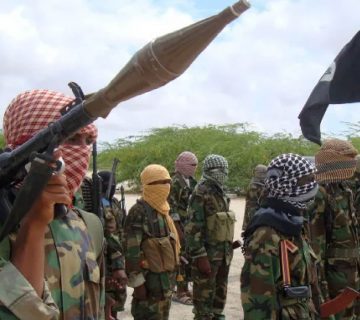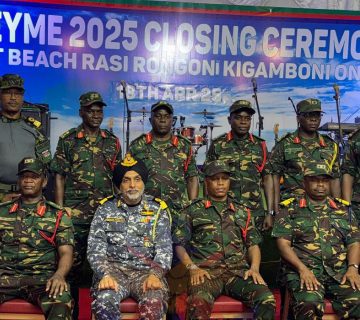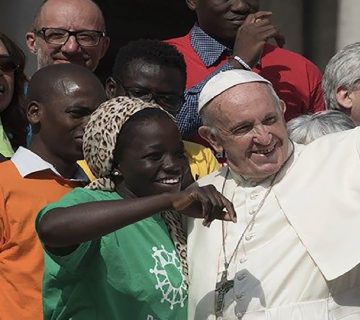Somalia was one of the first countries in the Horn of Africa to gain independence, in 1960. It became Somalia Republic after merging with Somaliland, with Aden Abdullah Osman Daar as its first president. Somalia enjoyed autonomy and prospered throughout the 1960s. However, Somalia did not take full advantage of its fairly homogenous population. Neither did the country fully exploit the strategic location, near the Red Sea, overlooking the Bab al-Mandab Straits, to sustain its economic and political development. By the time President Mohamed Abdullahi Mohamed (Farmajo) was elected in 2017, Somalia was boasting some of the worst human development indicators in the world. It is one of the world’s poorest countries, according to the 2017 Global Multi-dimensional Poverty Index. It is also one of the world’s most insecure countries. The Institute for Economics and Peace recently ranked it within the top 10 countries most impacted by terrorist activity. Farmajo now has the unenviable task of stabilizing Somalia, and putting the country on the path of development. This path is fraught with a myriad of challenges.
The first challenge to Somalia is its resource-based economic institutions. It is important to note that Somalia’s part modern, and part traditional economy also undermines efforts to develop its “extractive economic institutions.” Modern, urban life, complete with technological aids such as Internet, clash strikingly with pastoralism. Some of Somalia’s economic institutions were introduced by President Siad Barre who strongly advocated for scientific socialism (a form of a Marxist system that was centered on self-reliance). He argued that was the best political principle to manage government and production. Barre’s government, therefore, nationalized banks, insurance companies, the distribution of petroleum firms, and sugar refiners. It also created organizations for construction materials and foodstuff. The problem with nationalizing institutions is that the people lose their appetite to save, invest, and develop new ideas. Critics of nationalization also argue that this process stagnates the economy, and makes people who depend on it (the economy) poor.
Other institutions, such as those related to livestock keeping have existed for decades. Livestock is one of Somalia’s key foreign exchange earners, and Saudi Arabia is one of its largest livestock trading partners. Somalia earns an estimated 80 per cent of its foreign revenue from livestock exports to the Persian Gulf country annually. Somalia is generally a water-scarce country, with a large proportion of its land being arid or semi-arid. Livestock keeping in Somalia usually takes the form of pastoralism. This practice requires large tracts of land. It is also vulnerable to changes in weather and climatic patterns. Drought and famine are common and affect both the animal farmers and their animals.
Responding in Kind
A few years back, in 2011, Somalia experienced famine. In response, different countries, including Turkey, provided humanitarian aid. However, Somalia did not build resilience to such situations, and the problem persisted, in part because the country is embroiled in internal and external conflicts. In 2017, the World Food Programme listed Somalia as one of the countries in the Horn of Africa that experienced the famine that visited the region in 2016 and 2017. Half of Somalia’s population faces acute food shortages, with an estimated 15 per cent of experiencing famine. In addition to its extractive economic model, dominant farming system, and climatic conditions, Somalia received foreign aid throughout the 1990s and 2000s. This undermined agriculture and impoverished farmers. Somalia could have been earning more revenue from its livestock if it invested in value-addition in the livestock chain. In such circumstances, keeping the people and their source of livelihood alive takes precedence over value addition.
Dependence in foreign aid, humanitarian, or of another kind, allows foreign powers to control the aid-receiving country. After providing humanitarian aid to Somalia in 2011, Turkey’s President, Recep Erdogan, expected that Turkey would be involved in developing Somalia’s infrastructure. Some Persian Gulf countries such as Turkey, Qatar, United Arab Emirates (UAE), and Saudi Arabia, also started to engage with Somalia more after 2012, on matters such as trade and security. Qatar has supported the presidential bids of both President Farmajo, and Somalia’s former president, Hassan Sheikh Mohamud.
Turkey is an ally of Qatar, which sits on opposite sides with the Persian Gulf nations of Saudi Arabia and UAE in the recent Gulf crisis. When the crisis started in June 2017, Somalia could not pick one of its allies over the other. Somalia had offered to mediate the crisis. The country also did not want to compromise its already compromised security further. Somalia chose to sit on the fence, to the discomfort of the two Gulf countries, and their allies.
Clans, regional authorities, and the federal government
Another challenge that Farmajo grapples with is that the majority of Somalis are excluded from the governing process. Somalia is a clan-based society. There are numerous clans and sub-clans. These social groupings influence daily life. Somalia’s fabric began to unravel in 1991 following a coup that ousted Muhammad Said Barre, the country’s president at the time.
Barre depended on and used clan elders to maintain order in rural areas. His government had a code name (MOD), signifying three clans: Marehaan (his clan), Ogaden (his mother’s clan), and Dulbahante (his son-in-law’s clan). These three clans had majority representation in his government. The result was a warlord-led, repressive regime that was brutal and dictatorial. He disbanded parliament, got rid of the constitution, arrested politicians, banned political parties, and curtailed press freedom. Consequently, his rule was opposed; tribes in the northern and southern parts of Somalia, insurgent groups within the State, neighboring states, and the international community that detested his leadership style sought to end his rule.
Progressively, far-flung regions (mostly in rural areas of the country) and chiefs of warring clans eroded his power. Barre, who had led a military coup, had assumed power in 1969, when President Aden Daar was assassinated. Aden had governed the country relatively peacefully. When his six-year term ended in 1967, he handed power over peacefully to Abdi Rashid Ali Shemerke. Abdi, the country’s second president, was in charge until 1969 when Barre succeeded him.
Efforts to topple Barre bore fruit, in 1991. The warring clans could not agree on a new or interim government, and civil war erupted. Organized groups and intervention from other states in Somalia fueled the war, and it raged for more than two decades. It tore the country along social, political and economic lines. In 2012, Hassan Sheikh Mohamud was elected the 8th president, heading Somalia’s first central government in more than 20 years. President Hassan’s inauguration indicated efforts to establishing Somalia’s first fully-functioning democratic government. He is credited for reviving the much needed national reconciliation, attempting to end corruption, and reforming socio-economic and security sectors in the war-torn country. Somalia elected Mohamed Abdullahi Mohamed (Farmajo), the current president, in 2017.
It was difficult for Somalia to fully exploit the economic opportunities that the Red Sea and Bab al-Mandab present during the civil war, and for years after that. The Sea and the Straits are part of the world’s important shipping routes present. Countries such as Turkey, Qatar, United Arab Emirates (UAE), and Saudi Arabia, started to engage with Somalia more after 2012, on matters such as trade and security. Somalia, for example, earns an estimated 80 per cent of its foreign revenue from livestock exports to Saudi Arabia annually. Turkey, among other countries, provides humanitarian aid to Somalia, and seeks to develop the Horn of Africa country’s infrastructure. Qatar has supported the presidential bids of both President Farmajo, and Somalia’s former president, Hassan Sheikh Mohamud.
Turkey is an ally of Qatar, which sits on opposite sides with the Persian Gulf nations of Saudi Arabia and UAE in the recent Gulf crisis. When the crisis started in June 2017, Somalia could not pick one of its allies over the other. Somalia had offered to mediate the crisis. The country also did not want to compromise its already compromised security further. Somalia chose to sit on the fence, to the discomfort of the two Gulf countries, and their allies. UAE, meanwhile, continued to engage with Somaliland, an autonomous region in northern Somalia, without consulting Somalia. During the 2017 Somalia presidential elections, Turkey and UAE supported different candidates. Turkey, with its ally Qatar, supported political Islamists allied to Somalia’s immediate former President, Hassan. UAE supported non-Islamists allied to Somalia’s former Prime Minister, Omar Sharmarke. The northern part of Somalia is predominantly inhabited by Isaaq clan, is no longer part of Somalia. It seceded in 1991 and became Somaliland, with its capital in Hargeisa. Somaliland’s president, Musa Bihi Abdi, was elected in November 2017. Even though Somaliland has a territory and elected leaders, it does not have full recognition as a State.
In addition to Somaliland, Farmajo also has to deal with the divide between the federal and regional jurisdictions. Both federal and regional governments are constitutional entities, but Somalia’s constitution, which is provisional, is not explicit on the roles that these two constitutional jurisdictions should play. Most of the country’s resources are managed by the federal government. Somalia’s regional States, re-imagined about five years ago now, are governed by regional administrators. These include South West and Jubaland States. The South West and Jubaland States govern Lower Shabelle, and Middle Jubba partially. Shabelle and Jubba are the main bases of Somalia’s insurgent terror group, al Shabab. The group has planned terror attacks on Mogadishu (Somalia’s capital) from these bases. The group allegedly carried out the deadliest attack on Somalia’s soil yet on October 14, 2017. More than 500 people were killed in the twin blast, and hundreds more were injured. Most of them were reportedly Somalia nationals.
Al Shabab, also known as Harakat al-Shabab al-Mujahideen, entered Somalia’s political scene in 2006. The aim of the group is to transform Somalia into a fundamentalist Islamic State. It endeavors to not only occupy territory but also ensure strict adherence to Islamic law. Not all Somalis support this idea. The group has since terrorized the people of Somalia as well as citizens of its neighboring countries especially Kenya.
This year, Somali elected a president; al Shabab threatened his life before he was sworn in. On the day of the swearing-in ceremony, three people (including two school children) were killed in a mortar attack a few meters from where Farmajo was. Al Shabab claimed responsibility. Since then, al Shabab has continued to carry out attacks within and outside Somalia. The most recent and notable attack involved a truck bomb that killed more than 500 people and injured more than 400 others in October 2017. The fact that the Somalia government is not fully in charge in certain rural areas complicates Farmajo’s quest for stability. Insecurity exacerbates the effects of drought and famines on the people and their livelihoods.
Fixing Somalia
Farmajo needs the cooperation of both federal and regional governments to win the ‘war on terror’ in his country. Both jurisdictions are required to contribute troops to build a functional Somalia National Army (SNA). This is not easy though, as some regional administrators distrust the federal government, and the other way round. Critics have also faulted Farmajo’s disengaged leadership style, which is opposed to that of his predecessor, Hassan, noting that it encourages dissent. Meetings to discuss the formation of SNA have been planned, but only a few have taken place. A unified SNA should have been formed before November 2017. This has not yet happened.
Farmajo also needs the help of his neighbors, and both regional and international organizations to overcome Somalia’s seemingly insurmountable challenges that have continued to weaken Somalia’s economic and political institutions. His success will depend on how well he rebuilds these key institutions, and improve security, agriculture, and governance in the country.
He could, with the help of its allies and supporters, diversify the economy more. These expanded economic activities could include the exploitation of the opportunities that the Red Sea (key oil shipping line) and Bab al-Mandab Straits (marine transportation hub) present. A more diversified economy will also provide more viable alternative livelihoods, and help address the perennial problem of food insecurity.
Further, to improve the economy, and to make Somalia food secure depend, in part, on the political and security situations in the country. Farmajo should hold meetings involving both regional and federal governments, and ensure a unified, functional SNA is formed without further delay. Regional security arrangements, such as AMISOM, have helped to secure Somalia, and to help the country fight the terror meted by al Shabab in Somalia. There are indications less funding will be available to AMISOM by the end of this year. Without a functional SNA, the gains made in securing Somalia so far could be eroded.
Farmajo should also find a way of minimizing the cracks that exist between regional and federal governments. This effort could involve dialogue between the two jurisdictions, on a regular basis, to discuss and resolve new and existing issues.
Ian Mwenda is a Research Assistant at the HORN Institute.




I like this web site it’s a master piece! Glad I detected this ohttps://69v.topn google.Raise your business